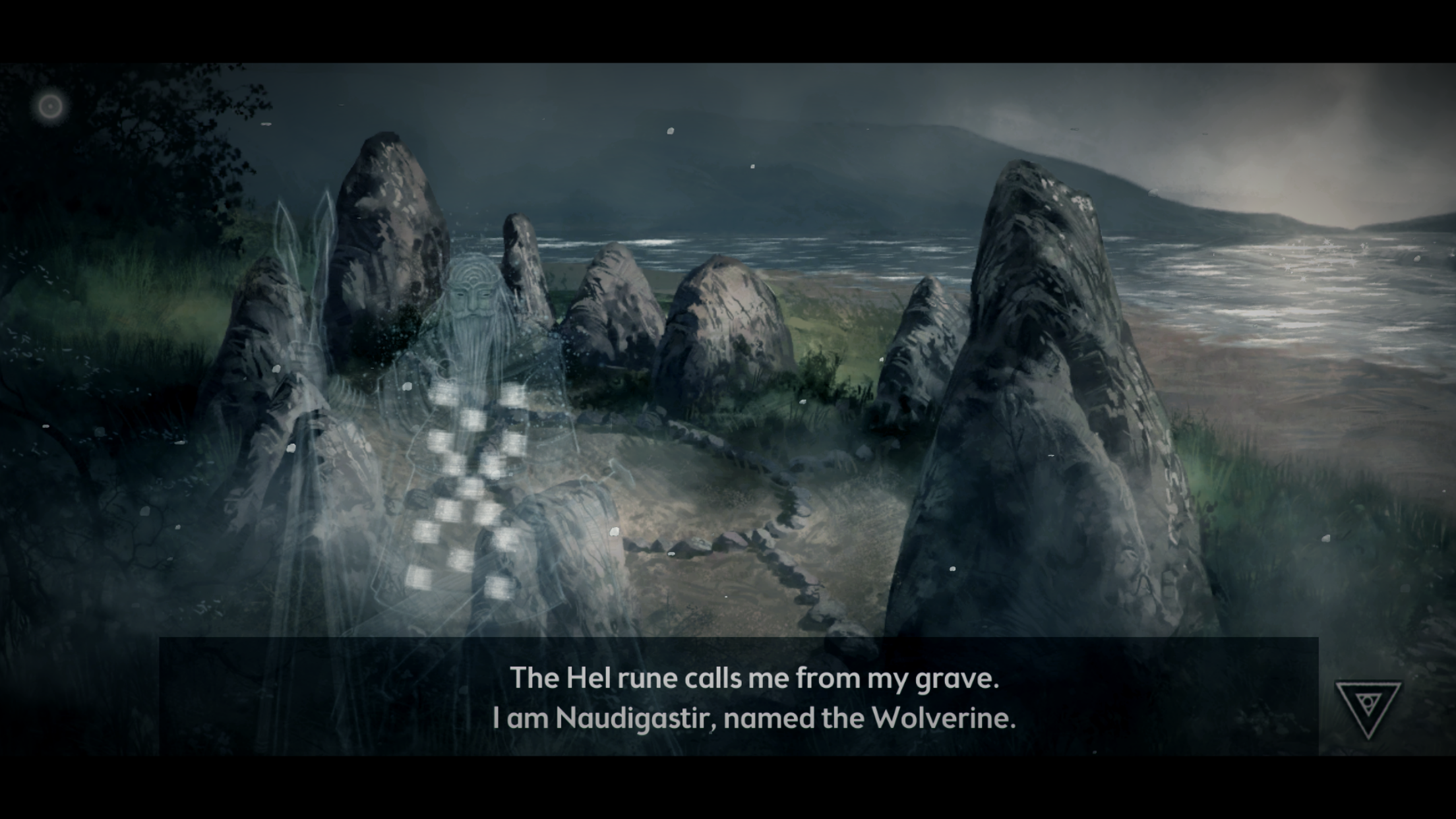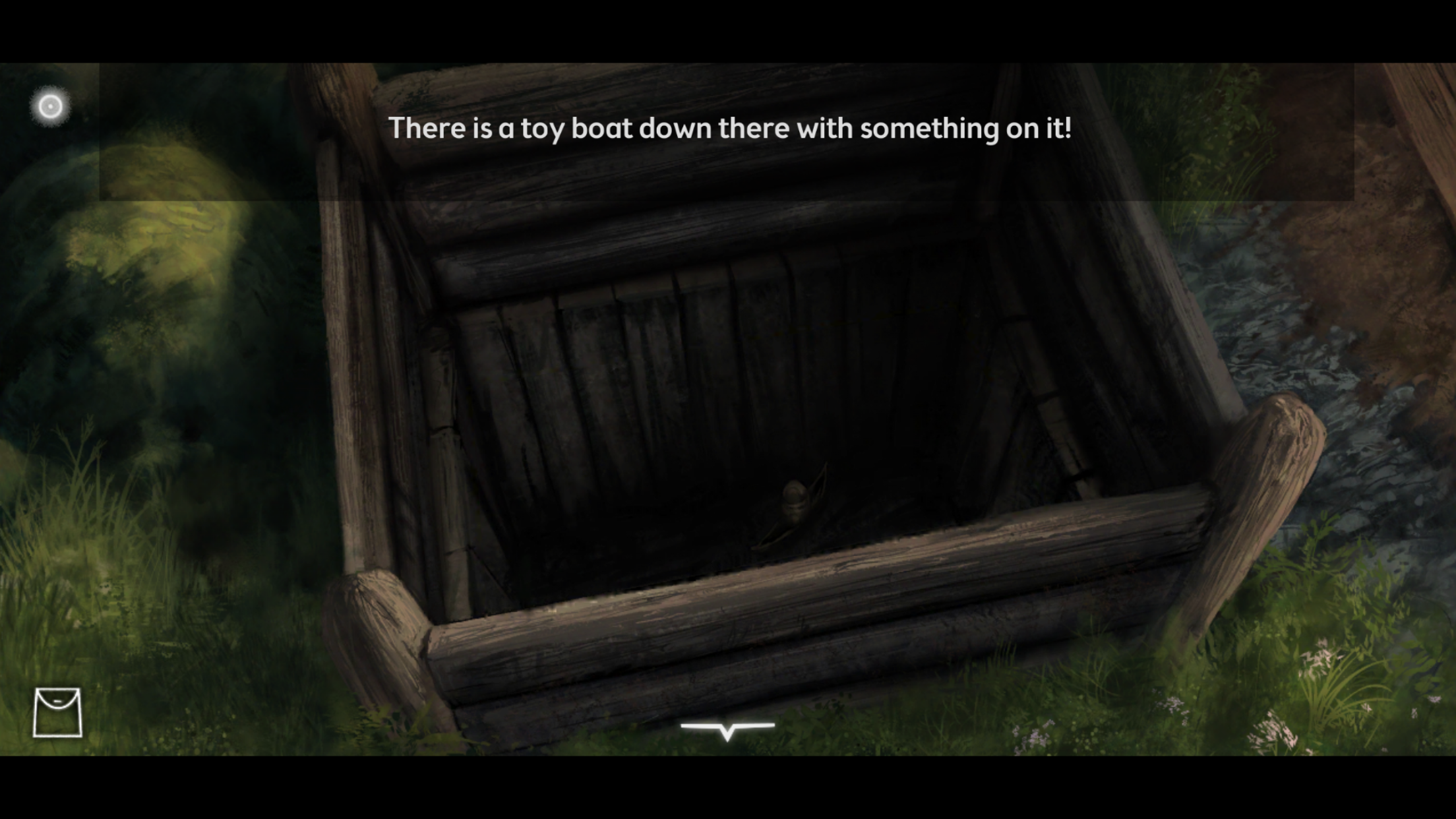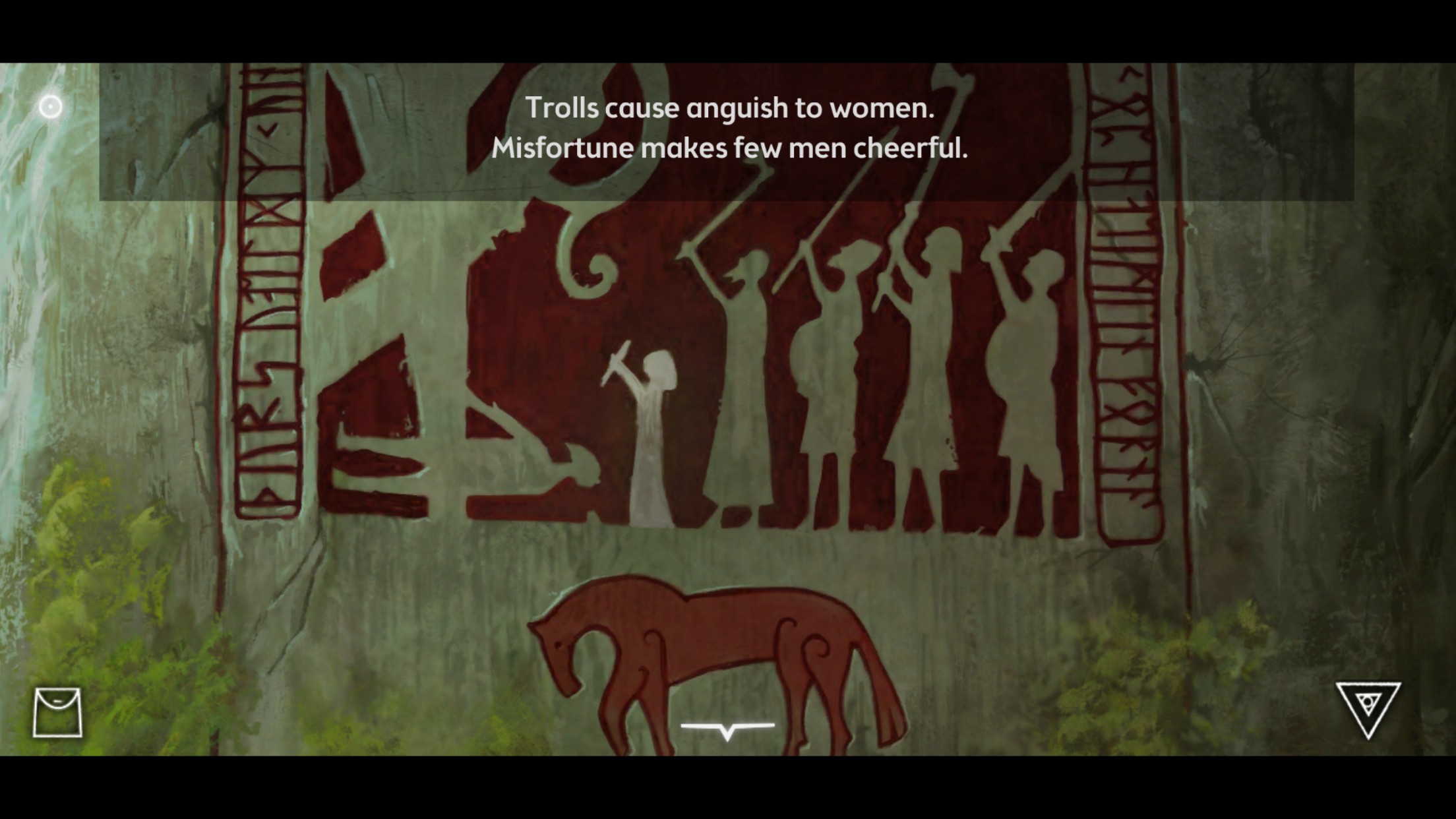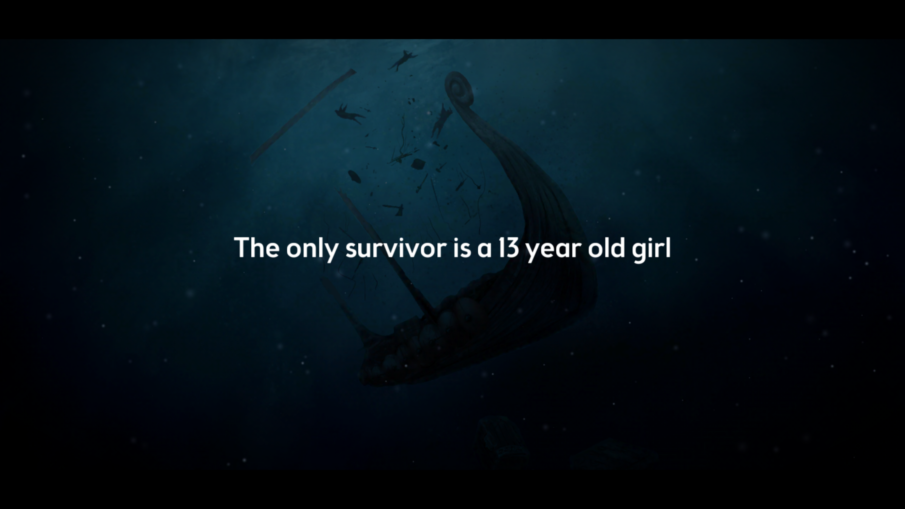iOS Universal, Android, PC/Mac •
I worry about Scandinavians. They’ve been exporting bleakness long enough that it may actually have overtaken mythology as their principal cultural product. The Frostrune mixes peanut butter* with a bar of that bitter chocolate: it’s a point-and-click adventure in which you play the lone survivor of shipwreck, a thirteen-year-old girl. After washing ashore, you discover that everyone you encounter is dead, murdered by a legendary being with the power to create magical ice in summertime. I’ll spoil the happy ending for you: you use necromancy to stop it, but everybody’s still dead and you’re still alone.
The Frostrune has some marvelous virtues: the paintings are at worst serviceable and often lovely, the story is an empowering tale of a young woman persevering to triumph over evil, and the setting is intimately tied to both the story and the puzzles. Also, your children won’t sing the songs incessantly in the car all the way to grandma’s house, which nicely sets it apart from the other young-Scandinavian-woman-struggling-with-magic-ice story you might know. [let it go, Kelsey, let it go -ed.] But it doesn’t address the irritation which often accompanies navigation in point-and-click adventures, and the puzzles have various flaws.

Navigation in some games is inherently enjoyable, offering pleasing minor decisions, attractive scenery displayed from new vantage points, or potential for game-relevant encounters. Failing that, it is often at least quick, with various fast travel systems available to the modern game designer. The Frostrune hews to the old ways, eschewing such frippery–you’ll traverse the same ground many times, and it’ll look the same every time (for relevant purposes–saying more would spoil a familiar device deployed well). There’s no map, so you just have to memorize where everything is, or else look everywhere until you find what you seek. The world isn’t huge, so that’s not as bad as it sounds, but the lack of context from one background to the next left me unable to make a mental map, which meant some of the puzzles were difficult for reasons which seemed more a consequence of the interface than the puzzle design.
That’s a lovely segue to the other major flaw I found: the puzzles were a disappointment. Sometimes, this was simply a matter of navigation. For example, in one case, there are four elements each of which can take four values. I could wander the world trying to find all the clues to tell me what those ought to be, but there are only 256 possibilities. I could check perhaps two per second, which meant that I expected solving the puzzle by brute force to take only a minute, on average. And that was often the case–the puzzles which required clues didn’t require you to do anything interesting with them, you just had to write down the solution and then bring it to the place you could use it. All of that was done using period-appropriate artwork or Norse mythology, which left it not entirely unpleasant, but it wasn’t an intellectual exercise. In those cases in which insight seemed called for, it was as likely as not to be obvious from the text, and when it wasn’t obvious, it was either obscure or misleading. To spoil one failed attempt, there is at one point a well with a toy boat at the bottom. You have a fishing rod, but you can’t even try to use the rod to hook the boat. That’s the sort of arbitrariness to the solutions which breaks immersion and makes the causality in the game feel artificial.

Thankfully, the designers seem to have recognized the issue, and built a hint system which amounts to a full walkthrough right into the game. Paradoxically, the fact that the puzzles aren’t very satisfying means they’re never very frustrating, either, because it doesn’t feel like checking the hints loses you a great puzzle-solving experience. So, while I enjoy good puzzles and lament the fact that these largely aren’t in that category, the hint system effectively just takes the emphasis off the puzzles and frees you to enjoy the narrative and setting. Putting the focus on the game’s strengths was a canny move by the developer.
If you like what you see in the screenshots, and don’t mind old-school point-and-click adventures, some wonderful work went into The Frostrune which you might appreciate. For anyone who plays such games principally for solid puzzles to solve, or can tolerate games which modernize the formula somewhat (like The Room) but finds the classic presentation irritating, or just finds February grey and depressing enough already, I’d recommend passing on this one.

* I expect some of you are thinking of Chris Hemsworth as peanut butter in this analogy. Possibly you’re thinking about Chris Hemsworth covered in peanut butter, and need a private moment to calm down. It’s also possible that, never having tried them, the erotic possibilities of peanut butter are exaggerated in my mind.
- The Frostrune for iOS Universal, $5
- The Frostrune for Android, $5
- The Frostrune for PC/Mac via Humble Bundle, $10
- The Frostrune for Mac via Mac App Store, $10
- The Frostrune for PC/Mac via Steam, $10



Spit my coffee out at this… both daughters are obsessed. The youngest’s first clear word other than “NO!” was “ELSA!” (same ridiculously loud volume for such a tiny person, different level of excitement). From the oldest - “Daddy, I’ll be Elsa, Elliot can be Anna, and you be Olaf… because you don’t have hair, like a snowman.” Thanks kid…
Better than being told I can’t play Mufasa to my 6-year old’s Simba because “Mufasa wasn’t fat, dad. You should be Pumba.”
My wife wonders why I need therapy.
Ha! I was pretty glad that she went with the Olaf = bald analogy, rather than Olaf = round. Guess the kid goes highbrow…
As a Scandinavian I totally endorse this review, and peanut butter.